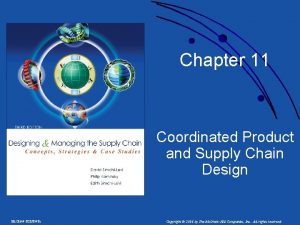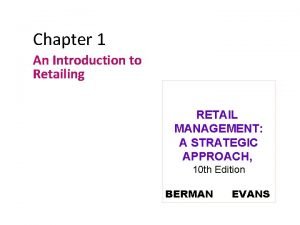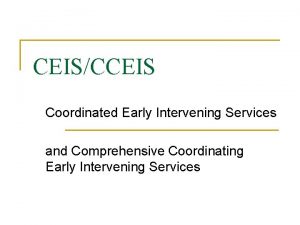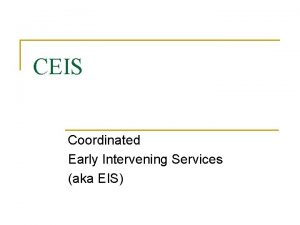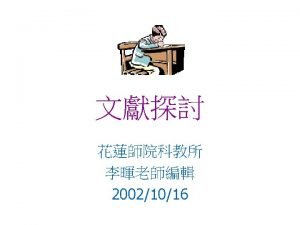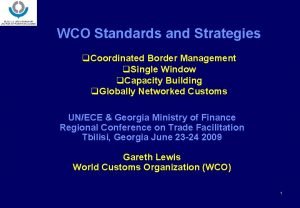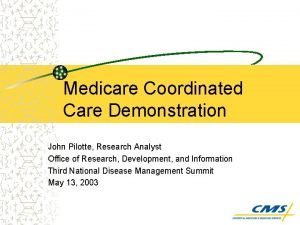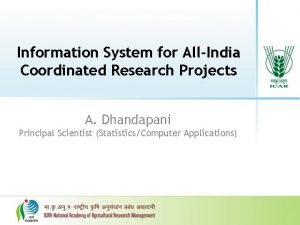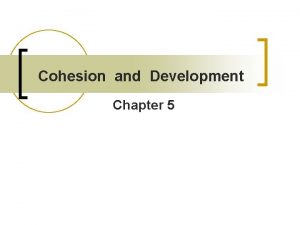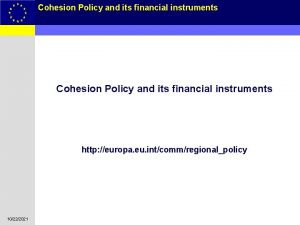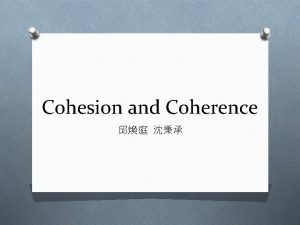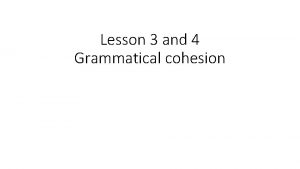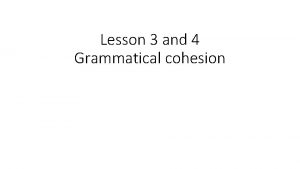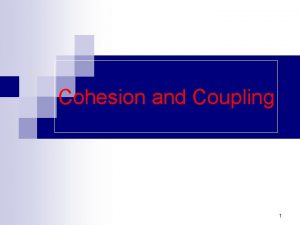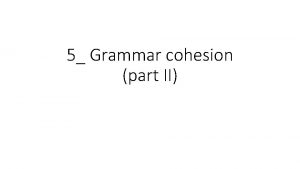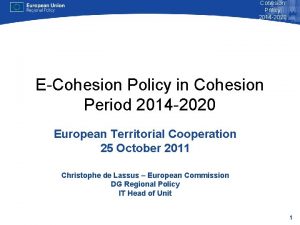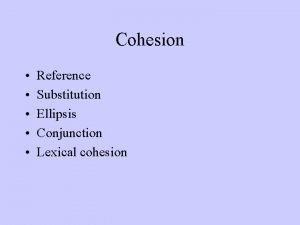Coordinated policies and cohesion policies their relationship and
























- Slides: 24

Coordinated policies and cohesion policies, their relationship and impact on the Member States in 2000 -2010 Marek Tiits, Imre Mürk, Tarmo Kalvet (IBS), Judit Kalman (IEHAS), Sandor Richter (WIIW) Paper prepared under GRINCOH FP 7 project funding

Research question Open method of co-ordination Real funding, relevant primarily to cohesion regions Lisbon / EU 2020 strategy Cohesion policy Policy results Actual socioeconomic development Judit Kalman Institute of Economics, Hungarian Academy of Sciences 2

Lisbon strategy Make EU “the most competitive and dynamic knowledge-based economy in the world capable of sustainable economic growth with more and better jobs and greater social cohesion” by 2010 • Targets: • • • employment rate 70%; GERD 3% of GDP vast number of specific targets when initially launched; with the re-launch in 2005, emphasis on action plan rather than specific targets Judit Kalman Institute of Economics, Hungarian Academy of Sciences 3

Lisbon policy and beyond • • • Even if progress has been made it must be said that the Lisbon Agenda has been a failure (mixed priorities, poor cordination, lack of political resolve, too top-down, etc, ) Key targets of the Lisbon strategy were nonetheless reinstated in EU 2020 • How likely is EU 2020 to succeed? • What needs to be done differently? Judit Kalman Institute of Economics, Hungarian Academy of Sciences 4

Europe 2020 We want EU to become a smart, sustainable and inclusive economy • Targets: • – employment 75% of 20 -64 yr olds – GERD 3% of GDP – reduce greenhouse gas emissions by at least 20%, increase the share of renewable energy in final energy consumption to 20%, and achieve a 20% increase in energy efficiency – share of early school leavers 10% – reduce the number of Europeans living below national poverty lines by 25% Judit Kalman Institute of Economics, Hungarian Academy of Sciences 5

Link between co-ordinated and cohesion policy Initially, cohesion policy was not assigned explicit role in achieving Lisbon objectives • Cohesion policy has been operationalised to follow the objectives of Lisbon Strategy and Europe 2020 only from 2006+ onwards • • strategic planning: Community Strategic Guidelines +NSRF : explicit „Lisbonization” • earmarking of SF (60%and 75%) • strategic reporting on achievement of obj. (new ‘Lisbon type’ indicators; earmarking codes incorporated into monitoring, link with NRP annual reports Judit Kalman Institute of Economics, Hungarian Academy of Sciences 6

Effectiveness of European cohesion policy • Barca report (2009): ”The state of the empirical evidence on the performance of cohesion policy is very unsatisfactory” • Earlier econometric studies inconclusive on effectiveness of policy • A deficit of strategic planning and in policy concept • Lack of focus on priorities (convergence itself is not a proxy for policy objectives!) • Failure to focus on results; problems with indicators • ineffective investment mix ( too much focus on infra+business) • Focus on absorption, lack of real policy debate Judit Kalman Institute of Economics, Hungarian Academy of Sciences 7

Cohesion gap remains even decade(s) after EU accession Regional gross domestic product PPS per inhabitant, % of EU 28, NUTS 2, PPS, 2011 (Eurostat 2014) Judit Kalman Institute of Economics, Hungarian Academy of Sciences 9

Cohesion gap in income terms Judit Kalman Disposable income of private households, NUTS 2, PPS, 2011 (Eurostat 2014) 11

Rapid catching up on-going? 120 3. 5 Bulgaria Romania Latvia Lithuania Croatia Estonia Poland Slovakia Portugal Hungary Czech Republic Manufacturing gross value added per employee Judit Kalman Cyprus Slovenia Greece Spain Italy 0. 5 France 0 Luxembourg 1. 0 Germany 20 United Kingdom 1. 5 Finland 40 Denmark 2. 0 Austria 60 Sweden 2. 5 Netherlands 80 Belgium 3. 0 Ireland* 100 Gross manufacturing value added per employee in KEUR, 2011 (Eurostat 2014) Growth of MVA 2001 -2011 (right axis) 13

Erosion of cost competitiveness the EU in periphery Real effective exchange rate index 2000 -2012 (Eurostat 2014) Judit Kalman Institute of Economics, Hungarian Academy of Sciences 14

Unemployment rate is now higher in many MS than in 2000 Unemployment rate, 2013 (Eurostat 2014) Judit Kalman Institute of Economics, Hungarian Academy of Sciences 15

Domestic and international equilibrium • • • Keynes-Nurkse (1947) effect Germany highly cost competitive in exporting manufactured goods, trade surplus highest ever Cohesion countries that run the highest external imbalances prior to the crisis, export their unemployed workforce – Change of working age population LV -18%, LT -9%, BG -4%, EE & PL -3% between 2008 and 2013. Judit Kalman Institute of Economics, Hungarian Academy of Sciences 16

Risk of poverty or social exclusion has increased Judit Kalman People at risk of poverty or social exclusion, 2012 in comparison with 2010 (Eurostat 2014) Institute of Economics, Hungarian Academy of Sciences 18

60 Stronger knowledge intensive industry needed! 50000 45000 40000 50 30000 40 25000 20000 15000 30 10000 5000 0 Lu xe m bo u Sw rg e De den nm Be ark lg Ge ium rm an Ire y la Fin nd la n Fr d an ce Ne M th alt er a la Hu nds ng Cz Sl ary ec ov h en Re ia pu b Au lic s Slo tria va kia Sp ai n Ita Es ly to ni a La tv Gr ia ee c Cy e p Lit ru hu s an Po ia la Po nd rtu g Cr al oa Bu tia lg Ro aria m an ia 20 (Eurostat 2014) Judit Knowledge-intensive services High-technology manufacturing GDP per capita Institute of Economics, Hungarian Academy of Sciences Kalman. Medium high-technology 21 GDP per capita in euro % of employment 35000

YET: Early school leavers aged 18 -24 Distance to national EU 2020 target Eurostat, DG Regio Judit Kalman 23

Cohesion policy is NOT the driving force for growth - but can help! Broader EU policy mix, macro conditions and cross-border financial flows played clearly greater role in gearing the growth in cohesion countries than the EU cohesion policy itself in 2000 s • uncontrolled flows of foreign financing increased trade imbalances, less so in case of floating exchange rate • rapid increase of unit labour costs, labour productivity gap and erosion of cost competitiveness despite of R&DI and enterprise policies • increase of unemployment despite active labour market policies • Such cyclical and structural imbalances did not get sufficient attention from other EU policy domains (Lisbon goals unmet) role for Cohesion (linked to EU 2020)! • Judit Kalman Institute of Economics, Hungarian Academy of Sciences 25

EU has become major source of public investment after crisis in CEE Share of ERDF, ESF and Cohesion Fund allocations and national co-financing in total public investment, average 2011 -2013 (Eurostat 2014) Judit Kalman Institute of Economics, Hungarian Academy of Sciences 26

Lisbon vs Cohesion: Policy coordination failure Two different loosely connected policy and governance systems Lisbon Strategy more of a vision, a political engine, than true policy process • Voluntary compliance with Lisbon goals did not work • OMC as a soft mechanism of policy learning beneficial, but failed to achieve an overall EU focus on competitiveness and employment • Judit Kalman Cohesion Policy: long traditions, impact unclear o decreased MS co-financing ability after the crisis Reprogramming o Effectiveness depends on institutional environment! o Recent reform (performance contracts ) hopefully improve situation for 2014 -2020 o Institute of Economics, Hungarian Academy of Sciences 27

Programming and implementation issues Lisbon objectives contradictory or unfeasible; several would not have been met even without crisis (Reinfeldt 2009) • ‘Lisbonisation’ of cohesion policy by earmarking did not really help (‘too little too late’): • • huge differences between MS in Lisbon earmarked allocations (exemption for CEEs, HU: 46. 8% and EE: 54. 1% among least • Administratively demanding • Emphasis on spending (absorption of ESIF) instead of outcomes (will see how it changes in 2014 -2020) • Yet it was a precedence of top-down governance (EU MS) – same tendency for 2014 -2020 with more specific spending categories Judit Kalman Institute of Economics, Hungarian Academy of Sciences 28

Quality of governance continues to be a major obstacle EU 28 average absorption: 68% 6 th Cohesion Report, 2014 Judit Kalman 29

Judit Kalman Institute of Economics, Hungarian Academy of Sciences 30

Conclusions & Recommendations Economic cohesion has been a mixed success so far asymmetrical integration within EU 28, with gains & losses A number of blind spots in the EU economic policy framework in 2000 s • Governance and institutional problems EU needs a more effective policy mechanism for co-ordination of production and employment levels across EU MS ( challenging due to multi-level governance system with several principals and agents – yet to be seen how the new and more stringent conditionalities for 2014 -2020 will work in reality) Reinforcement of EU 2020 strategy, clearer and actionable vision, identifying lead markets for emerging IT, green etc. technologies + development of an industrial revival strategy + foster upgrading by e. g. specialized investment funds (role of EIB! not only Cohesion) • • Judit Kalman Institute of Economics, Hungarian Academy of Sciences 31

– Properationalisation of EU 2020 headline indicators into meaningful policies remains a major challenge in cohesion countries (institutional weaknesses, rent seeking, distortions) getting incentives right in EU governance is crucial Capacity building (regul. , admin, institutional) – Along these lines better definition of policy actions + a more careful selection of performance indicators (Headline EU 2020 / cohesion policy indicators often still too abstract – ‘One size does not fit all’, successive stages of development, natl. averages ‘blur’ important issues, etc. ) Judit Kalman Institute of Economics, Hungarian Academy of Sciences 32
 Chapter 11 school policies and their functions
Chapter 11 school policies and their functions Coordinated product and supply chain design
Coordinated product and supply chain design Consciously coordinated meaning
Consciously coordinated meaning Serpentine model cmm
Serpentine model cmm Snohomish county coordinated entry
Snohomish county coordinated entry Ccrt
Ccrt Meaning
Meaning Ccc waiver
Ccc waiver Chicago coordinated entry system
Chicago coordinated entry system An introduction to retailing chapter 1
An introduction to retailing chapter 1 Coordinated effort in retailing concept
Coordinated effort in retailing concept Accelegrants
Accelegrants Accelegrants
Accelegrants A series of coordinated related multiple projects
A series of coordinated related multiple projects A series of coordinated related multiple projects
A series of coordinated related multiple projects A series of coordinated related multiple projects
A series of coordinated related multiple projects Chapter 1 modern project management
Chapter 1 modern project management Coordinated entry
Coordinated entry Coordinated border management
Coordinated border management Coordinated entry system nashville
Coordinated entry system nashville A series of coordinated related multiple projects
A series of coordinated related multiple projects A series of coordinated related multiple projects
A series of coordinated related multiple projects Achn medicaid
Achn medicaid John pilotte cms
John pilotte cms All india coordinated research project
All india coordinated research project

